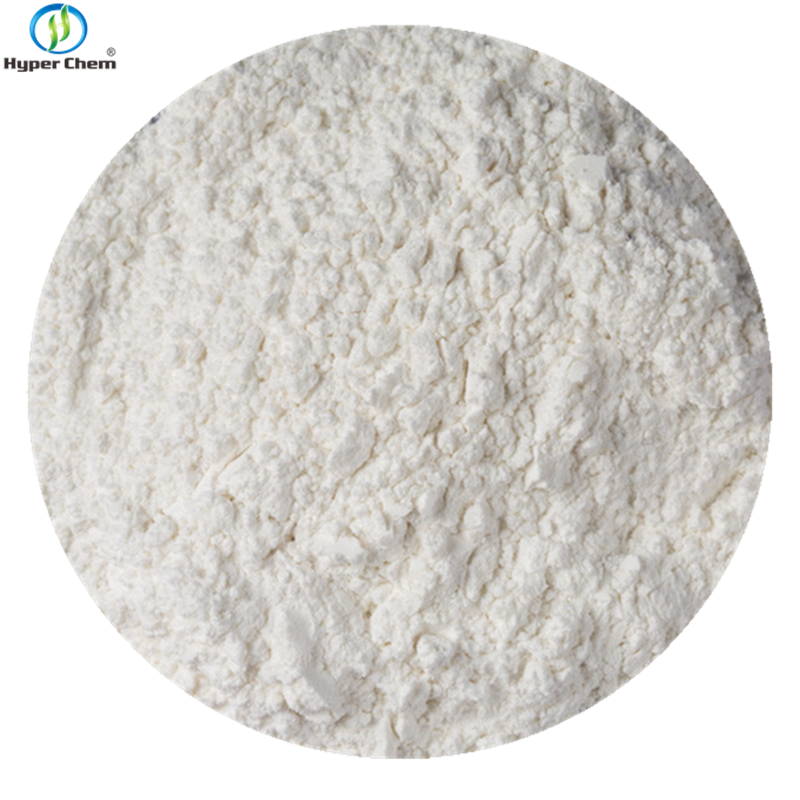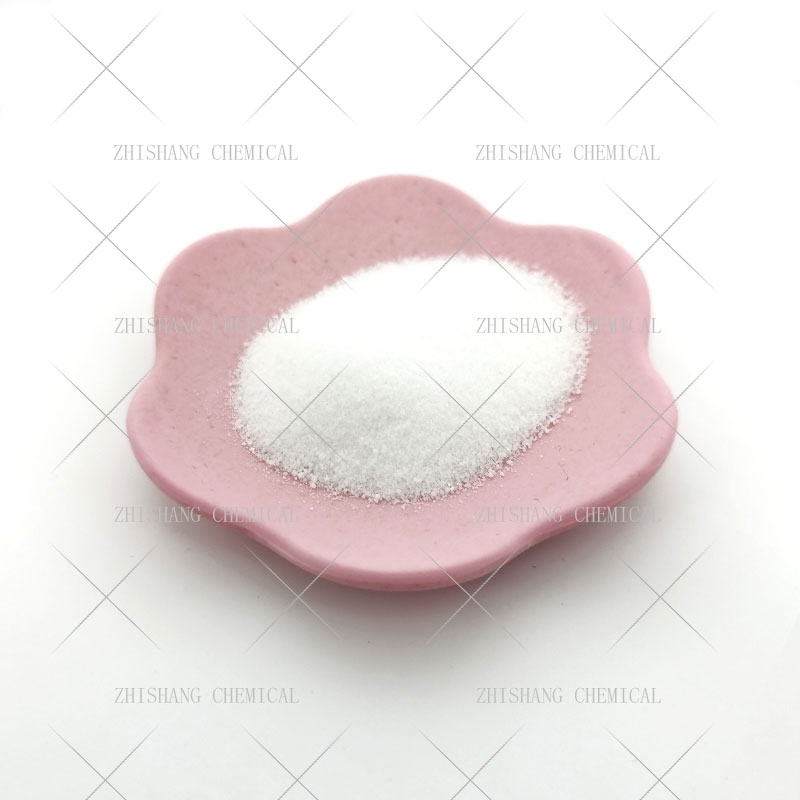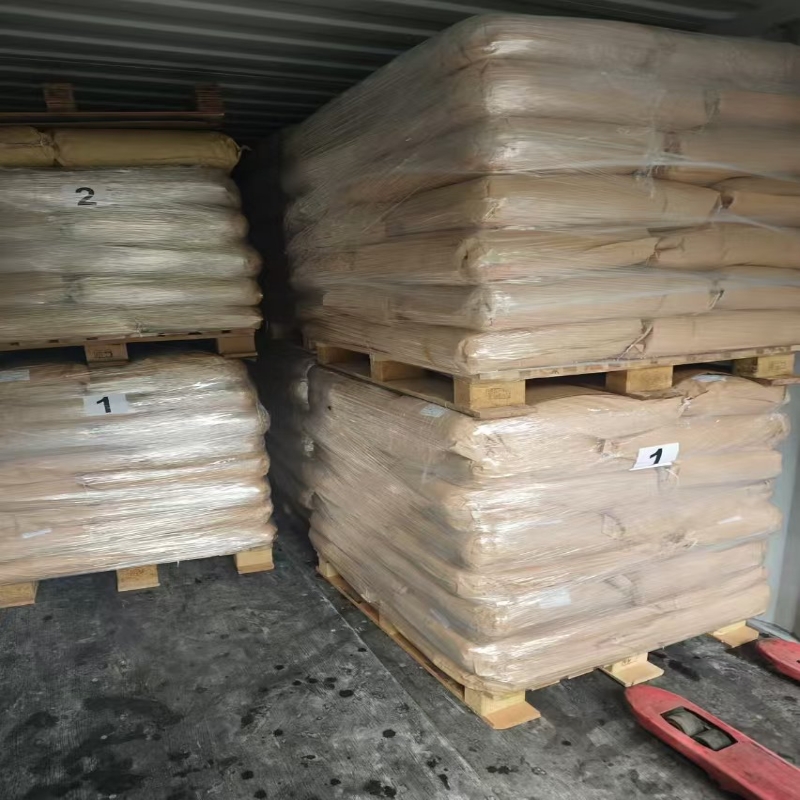-
Categories
-
Pharmaceutical Intermediates
-
Active Pharmaceutical Ingredients
-
Food Additives
- Industrial Coatings
- Agrochemicals
- Dyes and Pigments
- Surfactant
- Flavors and Fragrances
- Chemical Reagents
- Catalyst and Auxiliary
- Natural Products
- Inorganic Chemistry
-
Organic Chemistry
-
Biochemical Engineering
- Analytical Chemistry
-
Cosmetic Ingredient
- Water Treatment Chemical
-
Pharmaceutical Intermediates
Promotion
ECHEMI Mall
Wholesale
Weekly Price
Exhibition
News
-
Trade Service
Introduction In November 2021, Eur Urol Focus published a ureteral soft for kidney stones jointly developed by the Urolithiasis Branch of the European Society of Urology (EULIS), the International Urolithiasis Alliance (IAU) and the Department of Urology of the First Affiliated Hospital of Guangzhou Medical University.
Expert consensus on mirror lithotripsy (RIRS)
.
This consensus is the first international expert consensus on RIRS.
It was formulated after extensive solicitation of questionnaires and suggestions from well-known experts in the field of kidney stones at home and abroad.
It has important guiding significance for the promotion of RIRS technology and the improvement of clinical effects of surgery
.
The interpretation of the consensus by Professor Zhao Zhijian and Zeng Guohua is summarized as follows: Background The global incidence of kidney stones is gradually increasing
.
RIRS is one of the first-choice treatment methods for stones less than 2 cm.
It has the advantages of precision, effectiveness, safety, and rapid recovery.
With the development of technology and the improvement and diversification of equipment, RIRS surgery is becoming more and more popular
.
However, current clinical practice guidelines do not adequately address some of the issues facing RIRS, and some technical details are not supported by high-quality research
.
Many urologists lack a clear understanding of the details of the perioperative management, surgical techniques, and postoperative follow-up
.
Therefore, EULIS, in collaboration with the IAU, developed a consensus statement on RIRS
.
Interpretation of perioperative evaluation and management of consensus key contents Angiography and enhanced CT,
etc.
The panel concluded that NCCT can assess stone size, stone density, renal parenchyma thickness, infundibular pelvis angle, and calyx length
.
These factors are all related to stone clearance rate, so low-dose CT can be an effective method to assess the complexity of kidney stones
.
2.
Indications Although more and more literatures have reported the efficacy and safety of RIRS in the treatment of kidney stones larger than 2 cm, the consensus still emphasizes that RIRS is not recommended as the preferred treatment for stones larger than 2 cm
.
The expert group believes that for stones larger than 2 cm and not suitable for percutaneous nephrolithotomy (PCNL), staged surgery may be considered when flexible endoscopy is used as an alternative treatment
.
The consensus also recommends the maximum diameter as the preferred method for evaluating the stone load, but some clinical scholars also use stone volume or area as the method for calculating stone load
.
3.
Preoperative anti-infection The consensus especially emphasized the necessity of preoperative treatment of urinary tract infection
.
For patients with positive preoperative mid-segment urine (MSU) culture, sensitive antibiotic therapy is recommended for 4 to 7 days, but there is no consensus on the necessity of reviewing bacterial culture before surgery to ensure sterile urine
.
There is no consensus on the need for preoperative anti-infection in asymptomatic patients with negative urine bacterial culture but positive urine routine (white blood cells or nitrite positive)
.
For patients with negative preoperative urine routine and urine bacterial culture, the consensus recommends that prophylactic antibiotics be used once during the induction of anesthesia or within 30 minutes before surgery, and no additional dose is required if there are no signs of infection after surgery
.
4.
The consensus on the timing of discontinuation of antithrombotic drugs proposes that the treatment of antithrombotic drugs requires the joint decision of urologists and cardiologists (vascular surgeons), and proposes differentiated treatment according to the types of anticoagulant and antiplatelet drugs, including: long-term Aspirin does not need to be stopped before surgery; long-term use of clopidogrel should be stopped 5 to 7 days before surgery, and the need for bridging is determined according to the risk of thrombosis.
; Long-term use of warfarin, new anticoagulants (dabigatran, rivaroxaban, etc.
), drug withdrawal 3 to 5 days before surgery, there is no consensus on whether bridging therapy is needed
.
Surgical procedures and techniques 1.
Preoperative stents 71% of experts recommend rigid ureteroscopy to assess and/or dilate the ureter before insertion of the ureteral access sheath, but there is a risk of ureteral injury and decompression bleeding
.
Routine ureteral stent placement before RIRS is not recommended, but when flexible ureteroscopy and/or ureteral access sheath placement fails, indwelling ureteral stents are recommended as the preferred method to dilate the stenotic ureter, and ureteral stent dilation is recommended for 1-3 Weeks later, a second phase of RIRS was performed
.
The expert group also mentioned that when the infection such as fever caused by stone obstruction is difficult to control, preoperative stent drainage can be considered
.
2.
The guidewire consensus still recommends the use of safety guidewires from the perspective of safety, especially when there is ureteral edema, stenosis, anatomical abnormalities, poor visual field, ureteral stent crusting or incarcerated stones, indwelling safety guidewires can be beneficial to ureteroscopy.
Rapid re-entry into the renal collecting system, and rapid and safe stent placement in the event of intraoperative bleeding and ureteral injury
.
3.
Ureteral access sheath The consensus recommends that ureteral access sheath (UAS) should be used as a routine application, but when the treated stones are small, RIRS treatment without UAS may be considered
.
For the optimal placement of UAS, consensus recommends that the tip of UAS should be located 1-2 cm below the ureteropelvic junction
.
The expert group believes that the use of UAS can facilitate the rapid and repeated entry of the ureteroscope into the renal collecting system to achieve rapid lithotripsy; UAS can promote more timely and smooth outflow of intraoperative perfusate, and reduce the intra-pelvic pressure and the risk of postoperative infection
.
The panel also believes that UAS increases the risk of ureteral injury and therefore recommends placement of the sheath under routine X-ray monitoring
.
The consensus is that preoperative oral α-blockers for 3-7 days can increase the success rate of sheath placement
.
The process of sheathing is the main cause of ureteral injury.
The consensus recommends using the OLIVER grading.
Grade 0-2 (mucosal or smooth muscle injury, serosa is not involved) stent placement for 1-2 weeks; grade 3 (ureteral perforation) stent placement 6 to 8 weeks; grade 4 (complete ureteral avulsion) requires ureteral reconstruction
.
4.
Intraoperative perfusion The consensus recommends normal saline as the perfusion fluid
.
When non-isotonic sterile water is used as the perfusate, there is a risk of hemolysis, hyponatremia, and heart failure when the perfusate is absorbed more
.
In terms of perfusion methods, the consensus does not recommend which perfusion method is more advantageous
.
5.
Crushing tools The consensus recommends holmium lasers as the most conventional crushing tools
.
6.
Postoperative stents In most cases, the consensus recommends placement of either an endoureteral stent or an external stent at the end of the procedure
.
If there is no ureteral injury during the operation, the indwelling stent is recommended to be removed within 1 to 2 weeks
.
Efficacy evaluation and outcome definition consensus recommends non-enhanced CT scan (NCCT) as the imaging examination of choice for evaluating stone clearance rate, and the evaluation time is 3 months after surgery
.
Stone clearance is defined as residual debris (crushed stone) should be < 2 mm
.
The consensus also defines the operation time, which is the time elapsed from the time the ureteroscope enters the urethra until the ureteroscope leaves the urethra after the operation is completed
.
The consensus recommends that the time for a single flexible endoscopic operation should not exceed 90 minutes
.
When patients with ipsilateral nephrolithiasis require staged flexible endoscopy, the interval should be at least 4 weeks
.
References: Zhao Zhijian, Zeng Guohua.
Interpretation of "2021 EULIS and IAU Joint Expert Consensus: Ureteroscopic Lithotripsy" [J].
Journal of Clinical Urology, 2022, 37(2): 83-85.
Editor: LR Reviewer: XY execution: LR
Expert consensus on mirror lithotripsy (RIRS)
.
This consensus is the first international expert consensus on RIRS.
It was formulated after extensive solicitation of questionnaires and suggestions from well-known experts in the field of kidney stones at home and abroad.
It has important guiding significance for the promotion of RIRS technology and the improvement of clinical effects of surgery
.
The interpretation of the consensus by Professor Zhao Zhijian and Zeng Guohua is summarized as follows: Background The global incidence of kidney stones is gradually increasing
.
RIRS is one of the first-choice treatment methods for stones less than 2 cm.
It has the advantages of precision, effectiveness, safety, and rapid recovery.
With the development of technology and the improvement and diversification of equipment, RIRS surgery is becoming more and more popular
.
However, current clinical practice guidelines do not adequately address some of the issues facing RIRS, and some technical details are not supported by high-quality research
.
Many urologists lack a clear understanding of the details of the perioperative management, surgical techniques, and postoperative follow-up
.
Therefore, EULIS, in collaboration with the IAU, developed a consensus statement on RIRS
.
Interpretation of perioperative evaluation and management of consensus key contents Angiography and enhanced CT,
etc.
The panel concluded that NCCT can assess stone size, stone density, renal parenchyma thickness, infundibular pelvis angle, and calyx length
.
These factors are all related to stone clearance rate, so low-dose CT can be an effective method to assess the complexity of kidney stones
.
2.
Indications Although more and more literatures have reported the efficacy and safety of RIRS in the treatment of kidney stones larger than 2 cm, the consensus still emphasizes that RIRS is not recommended as the preferred treatment for stones larger than 2 cm
.
The expert group believes that for stones larger than 2 cm and not suitable for percutaneous nephrolithotomy (PCNL), staged surgery may be considered when flexible endoscopy is used as an alternative treatment
.
The consensus also recommends the maximum diameter as the preferred method for evaluating the stone load, but some clinical scholars also use stone volume or area as the method for calculating stone load
.
3.
Preoperative anti-infection The consensus especially emphasized the necessity of preoperative treatment of urinary tract infection
.
For patients with positive preoperative mid-segment urine (MSU) culture, sensitive antibiotic therapy is recommended for 4 to 7 days, but there is no consensus on the necessity of reviewing bacterial culture before surgery to ensure sterile urine
.
There is no consensus on the need for preoperative anti-infection in asymptomatic patients with negative urine bacterial culture but positive urine routine (white blood cells or nitrite positive)
.
For patients with negative preoperative urine routine and urine bacterial culture, the consensus recommends that prophylactic antibiotics be used once during the induction of anesthesia or within 30 minutes before surgery, and no additional dose is required if there are no signs of infection after surgery
.
4.
The consensus on the timing of discontinuation of antithrombotic drugs proposes that the treatment of antithrombotic drugs requires the joint decision of urologists and cardiologists (vascular surgeons), and proposes differentiated treatment according to the types of anticoagulant and antiplatelet drugs, including: long-term Aspirin does not need to be stopped before surgery; long-term use of clopidogrel should be stopped 5 to 7 days before surgery, and the need for bridging is determined according to the risk of thrombosis.
; Long-term use of warfarin, new anticoagulants (dabigatran, rivaroxaban, etc.
), drug withdrawal 3 to 5 days before surgery, there is no consensus on whether bridging therapy is needed
.
Surgical procedures and techniques 1.
Preoperative stents 71% of experts recommend rigid ureteroscopy to assess and/or dilate the ureter before insertion of the ureteral access sheath, but there is a risk of ureteral injury and decompression bleeding
.
Routine ureteral stent placement before RIRS is not recommended, but when flexible ureteroscopy and/or ureteral access sheath placement fails, indwelling ureteral stents are recommended as the preferred method to dilate the stenotic ureter, and ureteral stent dilation is recommended for 1-3 Weeks later, a second phase of RIRS was performed
.
The expert group also mentioned that when the infection such as fever caused by stone obstruction is difficult to control, preoperative stent drainage can be considered
.
2.
The guidewire consensus still recommends the use of safety guidewires from the perspective of safety, especially when there is ureteral edema, stenosis, anatomical abnormalities, poor visual field, ureteral stent crusting or incarcerated stones, indwelling safety guidewires can be beneficial to ureteroscopy.
Rapid re-entry into the renal collecting system, and rapid and safe stent placement in the event of intraoperative bleeding and ureteral injury
.
3.
Ureteral access sheath The consensus recommends that ureteral access sheath (UAS) should be used as a routine application, but when the treated stones are small, RIRS treatment without UAS may be considered
.
For the optimal placement of UAS, consensus recommends that the tip of UAS should be located 1-2 cm below the ureteropelvic junction
.
The expert group believes that the use of UAS can facilitate the rapid and repeated entry of the ureteroscope into the renal collecting system to achieve rapid lithotripsy; UAS can promote more timely and smooth outflow of intraoperative perfusate, and reduce the intra-pelvic pressure and the risk of postoperative infection
.
The panel also believes that UAS increases the risk of ureteral injury and therefore recommends placement of the sheath under routine X-ray monitoring
.
The consensus is that preoperative oral α-blockers for 3-7 days can increase the success rate of sheath placement
.
The process of sheathing is the main cause of ureteral injury.
The consensus recommends using the OLIVER grading.
Grade 0-2 (mucosal or smooth muscle injury, serosa is not involved) stent placement for 1-2 weeks; grade 3 (ureteral perforation) stent placement 6 to 8 weeks; grade 4 (complete ureteral avulsion) requires ureteral reconstruction
.
4.
Intraoperative perfusion The consensus recommends normal saline as the perfusion fluid
.
When non-isotonic sterile water is used as the perfusate, there is a risk of hemolysis, hyponatremia, and heart failure when the perfusate is absorbed more
.
In terms of perfusion methods, the consensus does not recommend which perfusion method is more advantageous
.
5.
Crushing tools The consensus recommends holmium lasers as the most conventional crushing tools
.
6.
Postoperative stents In most cases, the consensus recommends placement of either an endoureteral stent or an external stent at the end of the procedure
.
If there is no ureteral injury during the operation, the indwelling stent is recommended to be removed within 1 to 2 weeks
.
Efficacy evaluation and outcome definition consensus recommends non-enhanced CT scan (NCCT) as the imaging examination of choice for evaluating stone clearance rate, and the evaluation time is 3 months after surgery
.
Stone clearance is defined as residual debris (crushed stone) should be < 2 mm
.
The consensus also defines the operation time, which is the time elapsed from the time the ureteroscope enters the urethra until the ureteroscope leaves the urethra after the operation is completed
.
The consensus recommends that the time for a single flexible endoscopic operation should not exceed 90 minutes
.
When patients with ipsilateral nephrolithiasis require staged flexible endoscopy, the interval should be at least 4 weeks
.
References: Zhao Zhijian, Zeng Guohua.
Interpretation of "2021 EULIS and IAU Joint Expert Consensus: Ureteroscopic Lithotripsy" [J].
Journal of Clinical Urology, 2022, 37(2): 83-85.
Editor: LR Reviewer: XY execution: LR







